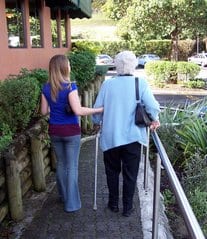Today, or maybe yesterday, is the official launch of my website. I launched it by creating a Facebook page to start getting the word out about Becoming A Family Caregiver. I figured what better way to spread the word than through social media, right?
I’ve been struggling for weeks now learning the ends and outs of WordPress and Elementor. I’ve had many disastrous starts and frustrating moments in-between times of carrying for my husband when our daytime paid caregiver is off, or he was in the hospital. I’ve also had to divide my time between working on this site, fixing meals, taking care of our home, helping my family, taking care of my health, and all the other chores required within my world view. Sound familiar? In other words, I live the life of a full-time caregiver staying active an average of 18 hours a day, every day, completing necessary tasks like you. So, when I say, I get it, I do. I really do. Been there, done that, and could write a best seller about it.
That’s why though I want to start this website. I’m blessed to have a caregiver’s help during the day, at least for now. My mission is to help others learn to be caregivers.
I’ve heard many stories of families sent home to do procedures after one training session. Thought the family member was afraid of causing harm, they had no choice except to do the care.
In the counties where I live, there are no home health pediatric resources at all. Adult home health is available but becoming more difficult to find. Respite care is not an option. Periodic home health care (i.e., visits a few times per week) can be arranged through an agency to the family, but between visits, the family is responsible for doing the care. I’m not talking about merely changing a dry dressing and putting on a clean one. I mean the family is responsible for performing nursing procedures such as:
• Re-inserting feeding tubes that could go into the lungs.
• Changing dressings on central lines that end in major blood vessels that if contaminated, could lead to total body infection.
• Calculating calories taken during a day, determining what to add to total parental nutrition (TPN) to supplement and adding that to a central line to run as a continuous IV on a pediatric patient.
• Applying new tracheostomy tubes, do sterile lung suction, and trach dressing changes.
• Learn to manage various types of wound evacuation devices.
• Learn to do sterile urinary catheterizations.
• Administer complex wound care that involves multiple steps multiple times per day and may include wounds infected with germs that could affect other family members.
Qualifying to get help for someone else to come in to perform these tasks is difficult. It’s not as easy as it seems. Though children may qualify for Medicaid benefits (i.e., no earned income) resources are not available to them in the rural area. The same is even becoming true for adults as the wages for paying nurses are not as competitive for those doing home health in rural areas as in urban areas. The lack of healthcare resources may be related to wage issues surrounding travel pay vs. hours worked. Travel time between patients is paid as mileage only. Therefore, long hours driving between patient homes (sometimes over a hundred miles on back roads) results in long days but limited pay for actual hours worked. That leaves paying a caregiver yourself and competing with the wages the local hospital or healthcare clinics are paying.
All these factors influence the increase we’re seeing in family and friends being sent home to do nursing care that registered nurses do in hospitals. The impact is that they do the best they can, but they often make mistakes and infections develop or other complications occur. Patients are re-admitted, and hospitals are left losing thousands of dollars annually due to readmissions occurring within 30 days of discharge.
All because families are not trained members of the medical profession and cannot be expected to function as one with one lesson on “how to.” They need more training.
That’s the goal of this website. I want to build a place you can come to and look at training again and again until you feel more comfortable with what you have to do. I can’t be there for everyone, but I can give you a place to come to learn what to do. I can make you some handouts (which I’ll do later) and help you figure out step by step what works. I can lend you support, answer your questions, and help you find resources. Maybe we can even build a network of support together?
A change is needed. Why not start it with this?


